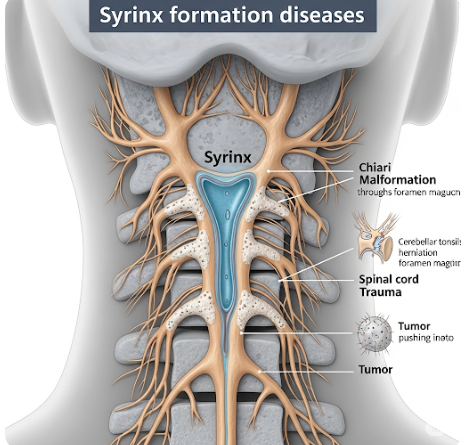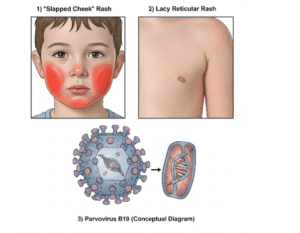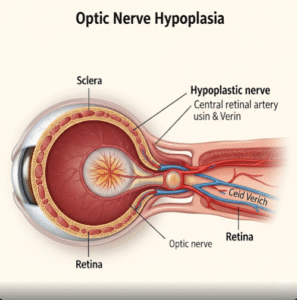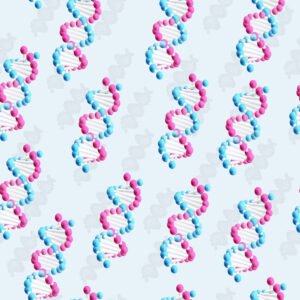Overview
Syrinx formation refers to the development of a fluid-filled cavity (syrinx) within the spinal cord. This condition can gradually damage the spinal cord tissue, leading to various neurological symptoms. It is often associated with conditions such as Chiari malformation, spinal cord injury, tumors, or inflammation. Early diagnosis and timely treatment are essential to prevent permanent nerve damage.
What is Syrinx Formation?
A syrinx is an abnormal, fluid-filled cyst inside the spinal cord. Over time, it can expand and elongate, compressing and injuring the spinal cord tissue. Syrinx formation is commonly linked to disorders that block cerebrospinal fluid (CSF) flow, leading to fluid accumulation within the spinal cord. The most frequent underlying cause is Chiari malformation, but trauma, tumors, and arachnoiditis can also contribute.
Symptoms
- Gradual loss of sensation, especially to pain and temperature
- Muscle weakness and wasting
- Stiffness in the arms, legs, or back
- Chronic pain in neck, shoulders, or back
- Numbness or tingling in hands and feet
- Loss of reflexes
- Bowel and bladder control issues (in advanced cases)
- Scoliosis (in children)
Causes
- Chiari malformation (most common)
- Spinal cord injury
- Spinal cord tumors
- Inflammation of the spinal cord (myelitis)
- Arachnoiditis (inflammation of the arachnoid membrane)
- Congenital spinal abnormalities
- Previous spinal surgeries or infections
Risk Factors
- History of head or spinal trauma
- Congenital brain or spinal malformations
- Connective tissue disorders (e.g., Ehlers-Danlos syndrome)
- Tumors involving the spinal cord
- Chronic spinal cord inflammation
Complications
- Progressive nerve damage
- Severe chronic pain
- Muscle weakness and paralysis
- Loss of coordination and balance
- Permanent loss of bladder and bowel function
- Irreversible spinal cord injury
Prevention
- Prompt treatment of spinal injuries and infections
- Early management of Chiari malformation
- Regular follow-up if diagnosed with spinal abnormalities
- Avoiding activities that increase spinal strain if at risk
- Monitoring neurological symptoms after spinal trauma
Treatment Options in Korea
Korea offers advanced neurosurgical and minimally invasive techniques for managing syrinx formation, including:
- MRI-based diagnosis for precise localization and cause identification
- Surgical decompression for Chiari malformation to restore CSF flow
- Syrinx shunting procedures to drain the cyst
- Tumor removal if caused by a spinal tumor
- Endoscopic spinal surgery for less invasive access
- Post-surgical rehabilitation with physical therapy
- Regular MRI monitoring to detect recurrence or progression













